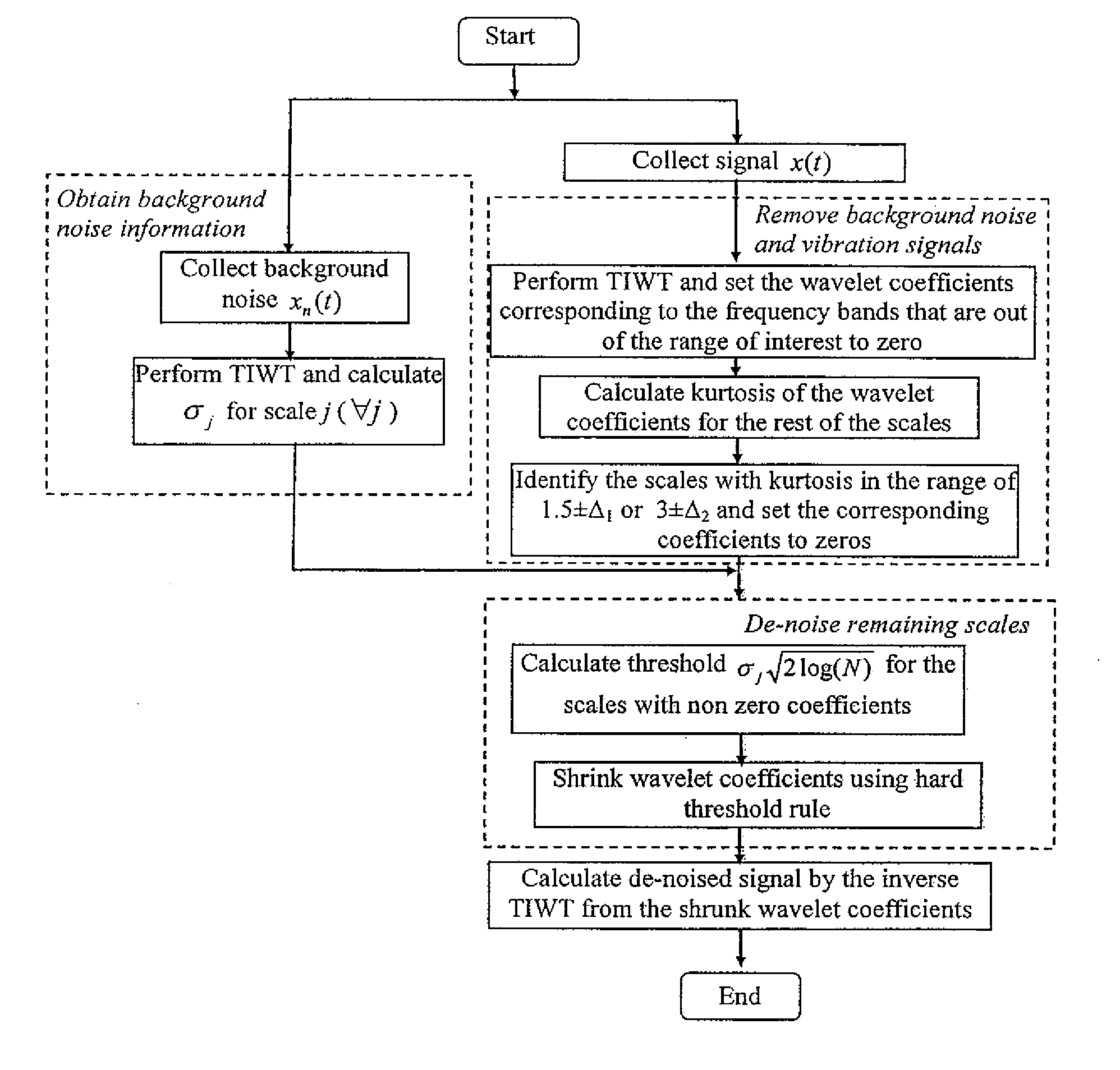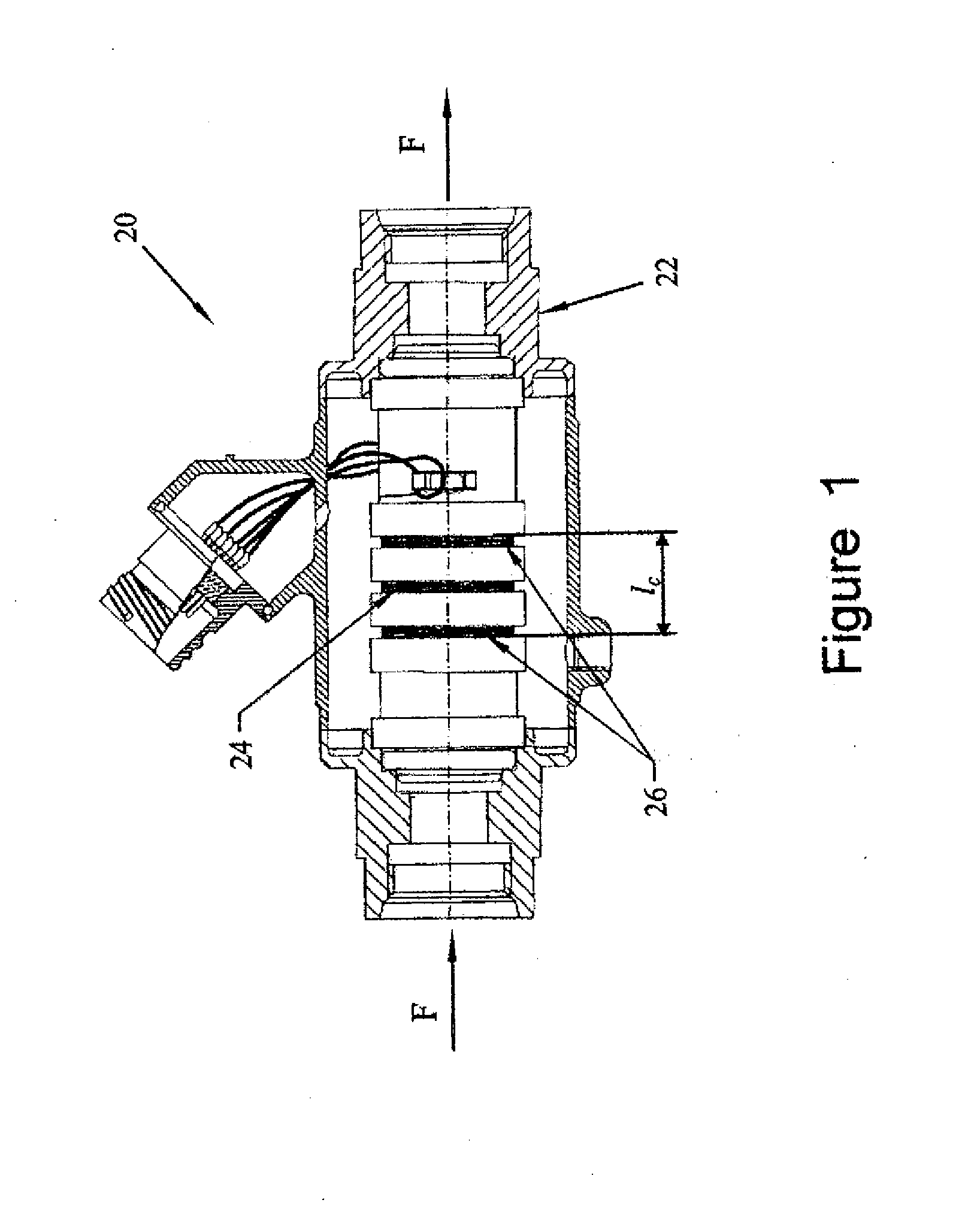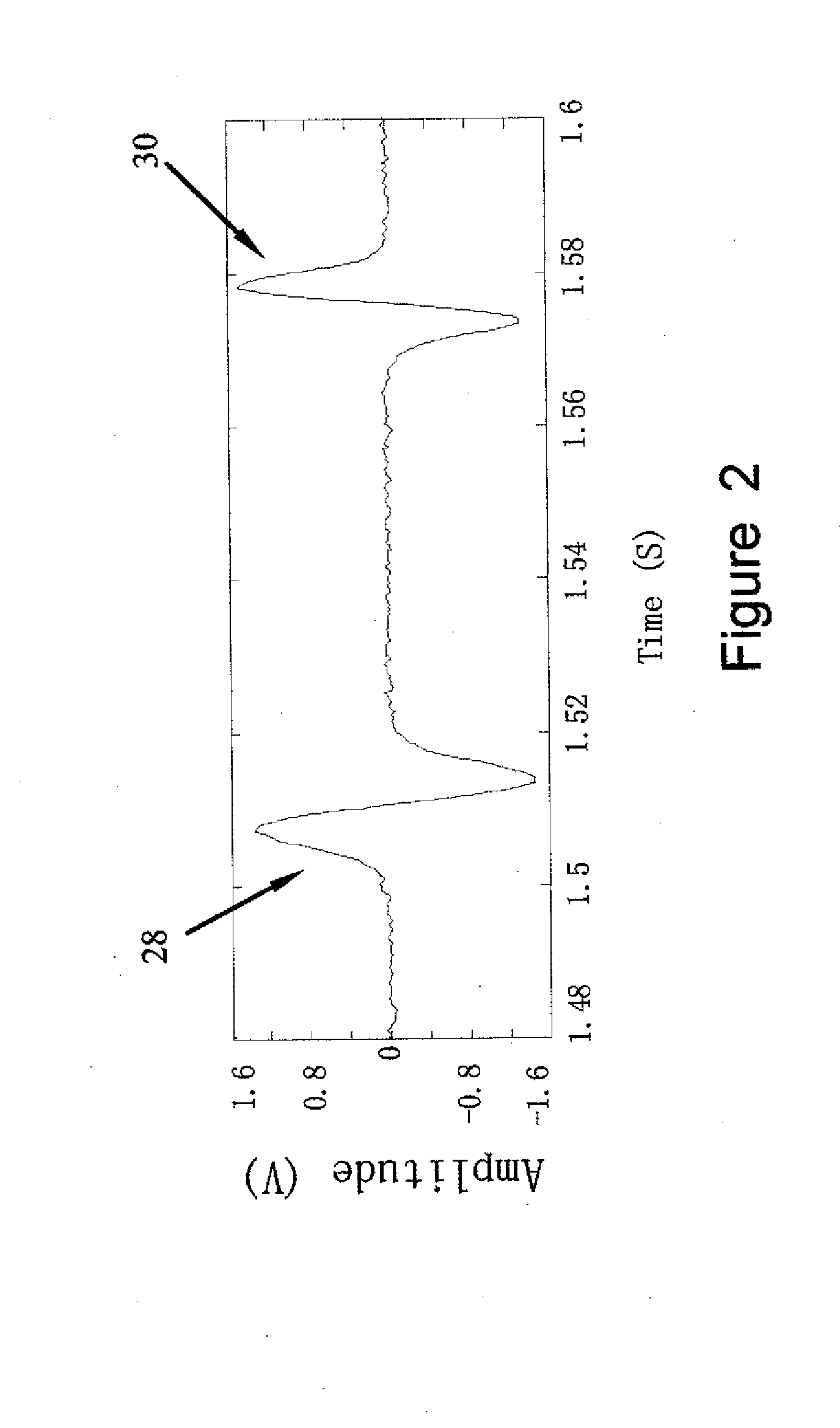Method to extract target signals of a known type from raw data containing an unknown number of target signals, intereference, and noise
a target signal and raw data technology, applied in the field of data processing, can solve the problems of not being able to work on purification of oil debris signal from collected noisy data not being able to report the work on purification of oil debris signal with the effect of vibration, so as to enhance the capability of a sensor and reduce any intrinsic noise signals
- Summary
- Abstract
- Description
- Claims
- Application Information
AI Technical Summary
Benefits of technology
Problems solved by technology
Method used
Image
Examples
Embodiment Construction
[0022]The definition of the following terms are applicable throughout the specification and the claims of this application.
[0023]A target signal is a signal which is sought. According to the described technique, target signals must be of finite duration, and must possess a known characteristic profile. Target signals may however occur at random intervals. In the case of an oil-debris sensor, a target signal is a transient signal created by the oil-debris sensor in response to the passage of a suspended particle passing through the sensor.
[0024]An intrinsic noise signal refers to a minimum, unavoidable noise of a sensor and measurement system. The intrinsic noise signal is the signal obtained from the sensor in controlled conditions. These conditions are contrived so as to possess no target signals and no significant interfering signals. In the case of an oil-debris sensor, the intrinsic noise signal is obtained from the sensor when operating in quiet laboratory conditions, without t...
PUM
 Login to View More
Login to View More Abstract
Description
Claims
Application Information
 Login to View More
Login to View More - R&D
- Intellectual Property
- Life Sciences
- Materials
- Tech Scout
- Unparalleled Data Quality
- Higher Quality Content
- 60% Fewer Hallucinations
Browse by: Latest US Patents, China's latest patents, Technical Efficacy Thesaurus, Application Domain, Technology Topic, Popular Technical Reports.
© 2025 PatSnap. All rights reserved.Legal|Privacy policy|Modern Slavery Act Transparency Statement|Sitemap|About US| Contact US: help@patsnap.com



